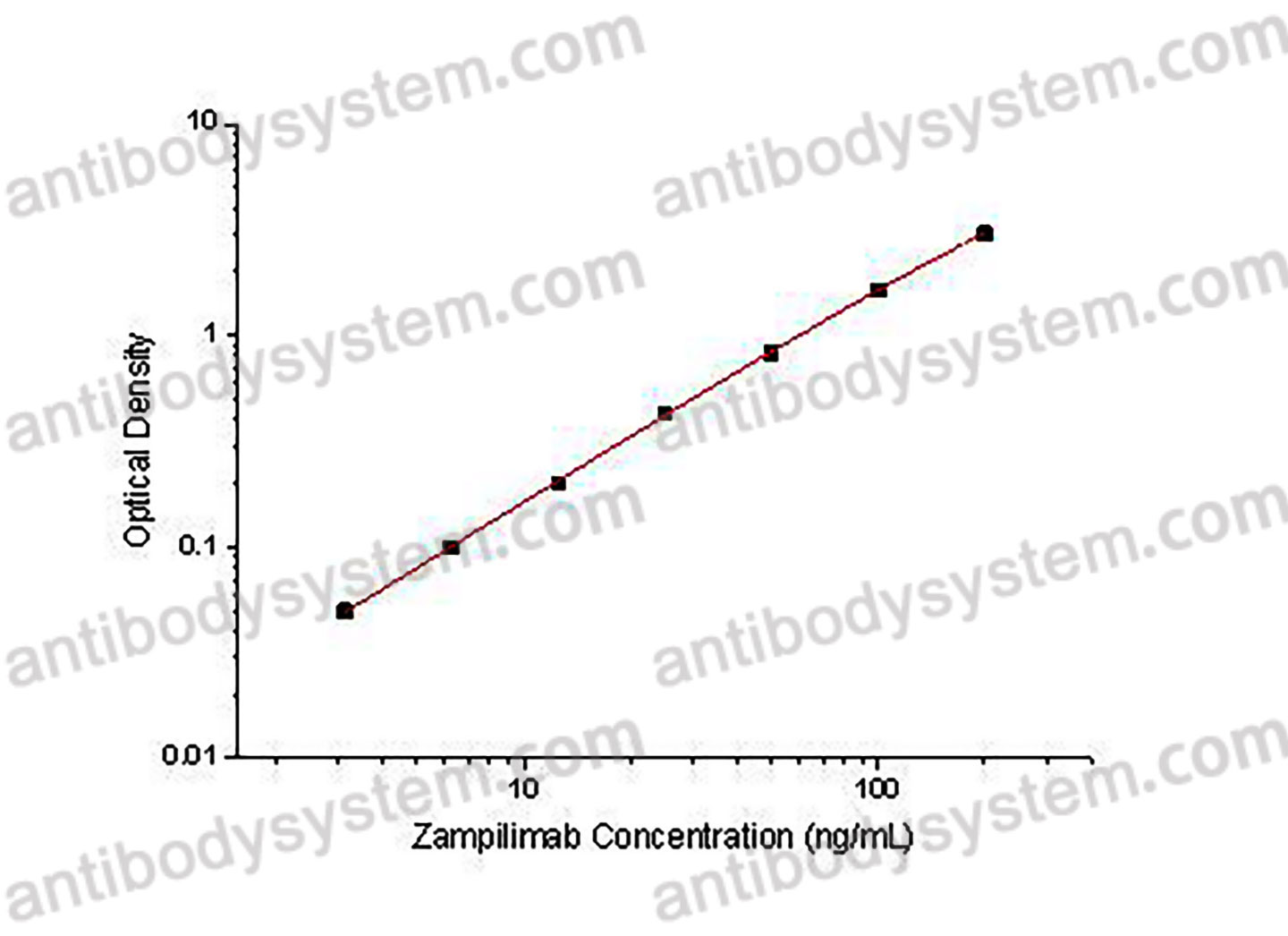Catalog No.
KDD49201
Description
PRINCIPLE OF THE ASSAY This assay employs the quantitative indirect enzyme immunoassay technique. Recombinant Human TGM2 has been pre-coated onto a microplate. Standards or samples are pipetted into the wells and any Zampilimab present is bound by the immobilized protein. After washing away any unbound substances, a biotin-labeled Mouse Anti-Human IgG antibody is added to the wells. After washing away any unbound substances, Streptavidin-HRP is added to the wells. Following a wash to remove any unbound enzyme reagent, a substrate solution is added to the wells and color develops in proportion to the amount of Zampilimab bound in the initial step. The color development is stopped and the intensity of the color is measured.
Applications
Used for the quantitative determination of Zampilimab concentration in serum and plasma.
Detection method
Colorimetric
Sample type
Plasma, Serum
Assay type
Quantitative
Range
3.13 - 200 ng/mL
Sensitivity
2.16 ng/mL
Precision
Intra-Assay Precision (Precision within an assay): <10%
Three samples of known concentration were tested sixteen times on one plate to assess intra-assay precision.
Inter-Assay Precision (Precision between assays): <15%
Three samples of known concentration were tested in twenty four separate assays to assess inter-assay precision.
|
|
Intra-Assay Precision |
Inter-Assay Precision |
||||
|
Sample |
1 |
2 |
3 |
1 |
2 |
3 |
|
n |
16 |
16 |
16 |
24 |
24 |
24 |
|
Mean (ng/mL) |
93.2 |
24.5 |
4.6 |
92.1 |
23.1 |
6.5 |
|
Standard deviation |
5.2 |
0.8 |
0.5 |
4.6 |
0.9 |
0.5 |
|
CV (%) |
5.5 |
3.2 |
10.0 |
4.9 |
3.9 |
7.5 |
Recovery
80-120%
Shipping
2-8 ℃
Stability and Storage
When the kit was stored at the recommended temperature for 6 months, the signal intensity decreased by less than 20%.
Alternative Names
UCB-7858, UCB7858, CAS: 2098280-42-1
Background
Zampilimab is an anti-transglutaminase 2 monoclonal antibody intended for the treatment of fibrosis such as Idiopathic Pulmonary Fibrosis (IDF) and Chronic Kidney Disease (CAI). Transglutaminase 2 is a multi-functional enzyme that modifies proteins by catalyzing the formation of intermolecular isopeptide bonds between glutamine and lysine side-chains. It plays a role in several biological functions and is associated in the pathology of several diseases.3

